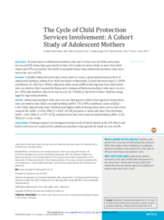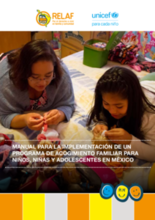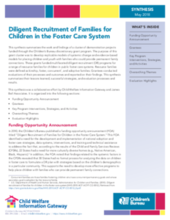Displaying 1241 - 1250 of 2214
This study compared the histories, circumstances and pathways of children receiving quasi-compulsory home-based support (under a child protection plan) to those for children ever placed in out of home care.
The current service-data study explored the emotional and behavioural symptom trajectories of 207 young people under the long-term care of a local authority in the South West of England, over their first five years in the care system.
The current service-data study explored the emotional and behavioural symptom trajectories of 207 young people under the long-term care of a local authority in the South West of England, over their first five years in the care system.
This research study proposes to explore aggregate of factors responsible for the academic struggles of foster care youth.
This manual, supported by the U.S. Substance Abuse and Mental Health Services Administration (SAMHSA) National Child Traumatic Stress Initiative (NCTSI) Grant, offers guidance on the implementation of Trauma-Focused Cognitive Behavioral Therapy (TF-CBT) with children in foster care and their families.
The purpose of this scholarly project was to create a guide for trauma-informed interventions for occupational therapists specifically to use with foster care children.
This study was conducted to determine if adolescent mothers who were in the care of child protection services (CPS) when they gave birth to their first child are more likely to have that child taken into CPS care before the child’s second birthday than adolescent mothers who were not in the care of CPS.
This paper examines the My Life, My Future programme that was set up to boost the emotional wellbeing and resilience of looked-after young people.
Este Manual desarrolla de manera genérica el marco conceptual y los diferentes procesos que constituyen un programa de un programa de acogimiento familiar para niños, niñas y adolescentes, de forma que resulta aplicable y adaptable a todos los contextos legales-políticos-institucionales que conviven en México.
This synthesis from the U.S. Children's Bureau summarizes the work and findings of a cluster of demonstration projects aimed at developing replicable models of systemic change and evidence-based models for placing children and youth with families who could provide permanent family connections.





